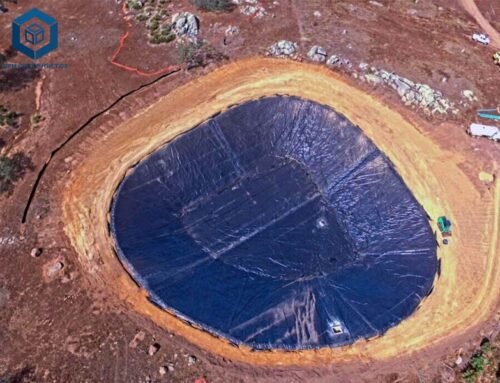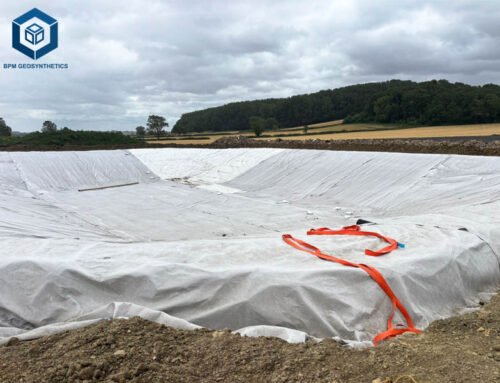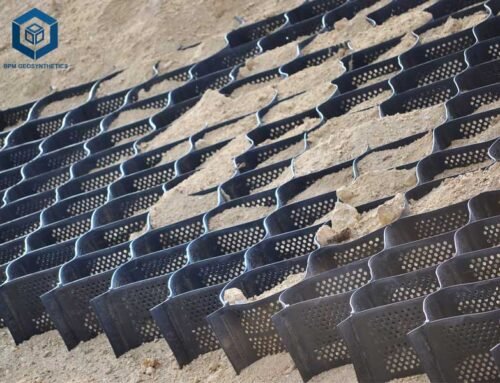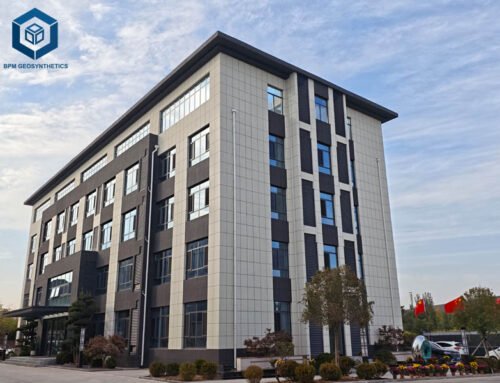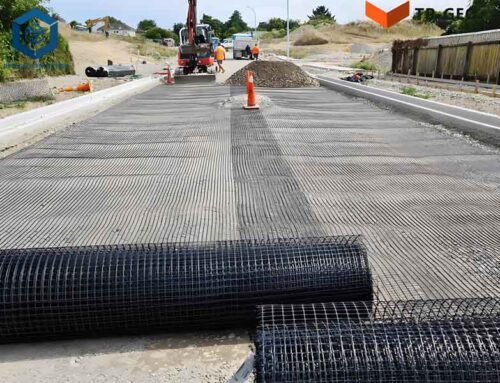HDPE geomembranes are essential synthetic liners used in civil engineering and environmental projects to prevent seepage, protect groundwater, and ensure containment integrity. Widely applied in landfills, mining, aquaculture, and water management, HDPE geomembranes are valued for their durability, chemical resistance, and cost-effectiveness. The global geomembrane market, valued at USD 2.48 billion in 2024, is projected to grow at a CAGR of 5.2% through 2034, with HDPE holding a 40.6% share due to its versatility and performance (Okorder, 2024). However, determining the HDPE Geomembrane Cost can be complex, as prices vary based on thickness, quality, order volume, and regional factors.
We explore key cost influencers, detailed specifications, market trends, and practical tips to help engineers, project managers, and buyers make informed decisions.
1. Understanding HDPE Geomembrane
1.1 What Is HDPE Geomembrane?
HDPE geomembranes are impermeable synthetic membranes made from high-density polyethylene resin, typically comprising 97.5% virgin polyethylene, 2.5% carbon black, and additives like antioxidants, UV stabilizers, and anti-aging agents.
- Landfill Liners: Prevent leachate seepage, protecting soil and groundwater (used in 60% of global landfill projects).
- Mining: Contain tailings and heap leach pads, with 40–60-year lifespans in landfill and mining applications.
- Aquaculture: Line fish and shrimp ponds, ensuring water retention (0.5–1.0 mm thickness commonly used).
- Water Management: Line canals, reservoirs, and wastewater treatment facilities, reducing water loss by 95%.
Geomembranes are favored for their high tensile strength (up to 27 MPa), chemical resistance (resistant to 80+ chemical mediums), and UV stability, with lifespans of 10–50 years depending on application and maintenance. Their thickness typically ranges from 0.2 mm to 3.0 mm (8–120 mil), with widths of 2–10 meters and roll lengths of 40–200 meters.
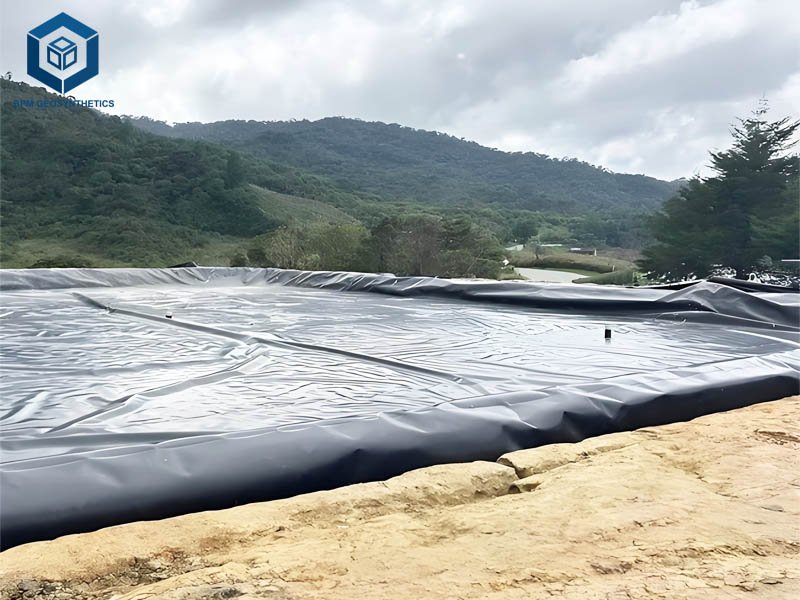
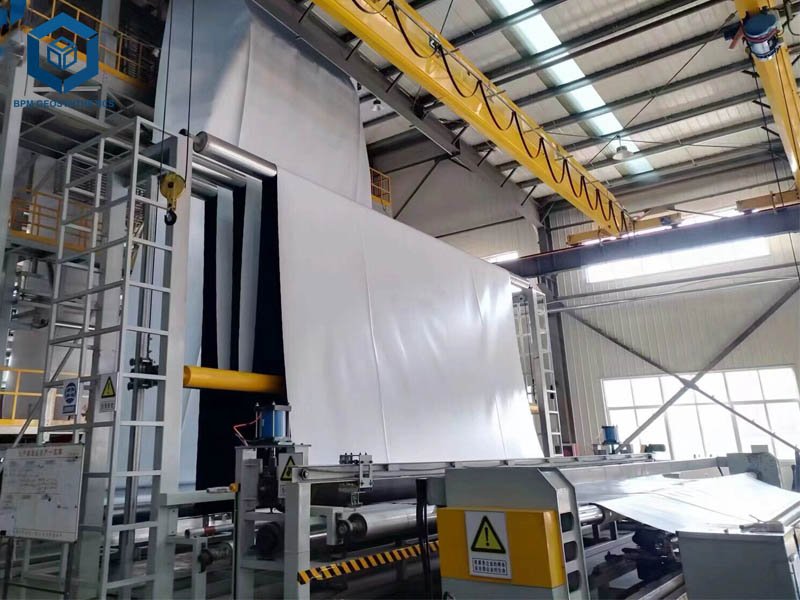
2. Why Choose HDPE Geomembranes?
HDPE geomembranes outperform alternatives like LLDPE, PVC, and EPDM in several ways:
- Cost-Effectiveness: 30–60% cheaper than North American or European alternatives when sourced from Chinese manufacturers.
- Durability: Withstand environmental stress cracking (ESC) and UV exposure, reducing replacement costs by 20% over 20 years.
- Chemical Resistance: Resist acids, alkalis, and solvents, ideal for harsh environments like mining (pH 2–12 tolerance).
- Customizability: Available in smooth or textured finishes, with textured options offering 15–35% higher friction for slope stability.
However, HDPE is less flexible than LLDPE, requiring careful subgrade preparation, and thicker liners (e.g., 80 mil) demand skilled installation to avoid punctures.
3. Factors Influencing HDPE Geomembrane Cost
The cost of HDPE geomembranes in 2025 ranges from $0.50 to $20 per square meter globally, with variations driven by multiple factors. Below, we break down the key influencers, supported by recent data.
3.1 HDPE Geomembrane Cost – Material Quality
- Virgin vs. Recycled Resin: Virgin HDPE, meeting GRI-GM13 standards, costs 20–30% more than recycled resin but offers 40–50-year lifespans compared to 5–15 years for recycled materials. For example, Haoyang Environmental uses imported Saudi Arabian TR131 virgin resin, ensuring 99% quality stability.
- Additives: Carbon black (2.5%) and UV stabilizers increase costs by 5–10% but enhance UV resistance by 90%, critical for exposed applications.
- Certifications: ISO 9001:2015, GRI-GM13, and CE-compliant geomembranes cost 20–30% more due to rigorous testing but reduce failure risks by 15%.
Cost Impact: Virgin HDPE liners cost $1.50–$3.50/m², while recycled options range from $0.80–$1.50/m².
3.2 HDPE Geomembrane Cost – Thickness and Specifications
- Thickness Range: Common thicknesses include 0.5 mm (20 mil), 1.0 mm (40 mil), 1.5 mm (60 mil), 2.0 mm (80 mil), and 3.0 mm (120 mil). Thicker liners cost more due to increased material use. For instance, 0.5 mm liners cost $0.50–$1.50/m², while 2.0 mm liners cost $2.50–$5.00/m².
- Surface Finish: Smooth liners are 15–35% cheaper than textured liners, which provide enhanced friction for slopes (coefficient of friction 0.6–0.8).
- Roll Dimensions: Standard widths (5.8 m, 7 m, 8 m) are cost-efficient, while custom widths (e.g., 3 m) increase costs by 10% due to material waste.
Cost Impact: A 1.5 mm smooth HDPE liner from Haoyang costs $2.00–$2.50/m² in South Africa, while textured versions cost $2.30–$2.90/m².
3.3 HDPE Geomembrane Cost – Order Volume
- Bulk Discounts: Orders above 10,000 m² reduce costs by 20–30% due to economies of scale. Small orders (100–1,000 m²) cost $1.50–$3.00/m², while bulk orders drop to $0.50–$1.50/m².
- Project Size: Large-scale projects like landfills benefit from lower per-unit costs, while small ponds face higher costs due to fixed setup fees.
Cost Impact: A 50,000 m² landfill project may cost $1.20/m², while a 500 m² pond liner costs $2.50/m².
Supplier Location and Logistics
- Regional Pricing: Chinese suppliers offer the lowest prices ($0.50–$3.50/m²) due to high production capacity and lower labor costs. North American suppliers charge $5–$20/m² due to strict standards and higher production costs.
- Shipping Costs: International shipping adds $0.10–$0.50/m², depending on distance and container size (20–40 ft).
- Local Taxes: Import duties and VAT increase costs by 5–15% in regions like South Africa and the Philippines.
Cost Impact: A 1.0 mm HDPE liner shipped to the Philippines costs $1.50–$2.00/m² from China, compared to $6–$10/m² from the USA.
3.4 HDPE Geomembrane Cost – Installation and Accessories
- Installation Costs: Professional installation costs $0.50–$2.00/m², depending on site complexity and labor rates. Complex terrains (e.g., rocky subgrades) increase costs by 20%.
- Accessories: Seam tapes, adhesives, and geotextile underlays add $0.20–$0.50/m². Geotextiles ($0.15–$0.50/m²) enhance puncture resistance by 80%.
- Welding Equipment: Wedge welders for field seaming cost $5,000–$10,000, with rental options at $100–$200/day.
Cost Impact: A 10,000 m² project with installation and geotextiles may add $7,000–$20,000 to total costs.
Market Conditions
- Raw Material Prices: HDPE resin prices, tied to crude oil, fluctuate by 10–20% annually. A 2025 oil price surge could increase costs by 5–10%.
- Supply Chain Dynamics: Global demand for HDPE geomembranes, driven by Asia-Pacific’s waste and water management projects, may raise prices by 5% in 2025.
- Currency Fluctuations: A stronger USD increases costs for non-US buyers by 5–10%.
Cost Impact: A 10% resin price hike could raise a 1.5 mm liner from $2.00/m² to $2.20/m².
3.5 HDPE Geomembrane Cost – Detailed Cost Breakdown by Application
Aquaculture (Fish and Shrimp Ponds)
- Thickness: 0.5–1.0 mm (20–40 mil) for cost savings and flexibility.
- Specifications: Smooth liners, 5.8–8 m width, black color for UV resistance.
- Cost: $0.50–$1.50/m² for materials, $0.50–$1.00/m² for installation.
- Example: A 2,000 m² fish pond using 0.75 mm HDPE costs $2,000–$5,000 total (materials + installation).
- Lifespan: 10–20 years, reducing replacement costs by 15% compared to LLDPE.
Landfills
- Thickness: 1.5–2.0 mm (60–80 mil) for durability and regulatory compliance (GRI-GM13).
- Specifications: Textured liners for slope stability, 7–8 m width, virgin resin.
- Cost: $2.50–$5.00/m² for materials, $1.00–$2.00/m² for installation.
- Example: A 50,000 m² landfill using 2.0 mm HDPE costs $175,000–$350,000 total.
- Lifespan: 40–50 years, with 95% seepage prevention.
Mining (Heap Leach Pads, Tailings)
- Thickness: 1.5–3.0 mm (60–120 mil) for puncture resistance (800 lbs ball tip resistance).
- Specifications: Textured, 8–10 m width, high chemical resistance (pH 2–12).
- Cost: $3.00–$6.00/m² for materials, $1.50–$2.50/m² for installation.
- Example: A 20,000 m² heap leach pad using 2.0 mm HDPE costs $90,000–$170,000 total.
- Lifespan: 40–60 years, reducing environmental risks by 20%.
Water Management (Canals, Reservoirs)
- Thickness: 0.75–1.5 mm (30–60 mil) for cost-efficiency and flexibility.
- Specifications: Smooth liners, 5.8–8 m width, UV-resistant.
- Cost: $1.00–$2.50/m² for materials, $0.50–$1.50/m² for installation.
- Example: A 5,000 m² canal using 1.0 mm HDPE costs $7,500–$20,000 total.
- Lifespan: 20–30 years, saving 95% of water loss.
3.6 HDPE Geomembrane Cost – Comparing HDPE Geomembranes to Alternatives
HDPE vs. LLDPE
- Cost: LLDPE costs $1.00–$5.00/m², slightly higher than HDPE ($0.50–$3.50/m²) due to flexibility.
- Performance: LLDPE is more flexible but less durable, with 20–30% shorter lifespans (10–30 years).
- Best Use: LLDPE for temporary or low-stress applications; HDPE for long-term containment.
HDPE vs. PVC
- Cost: PVC costs $8.00–$20.00/m², 2–4 times higher than HDPE.
- Performance: PVC offers good chemical resistance but degrades faster in UV exposure, requiring 20% more maintenance.
- Best Use: PVC for aesthetic applications (e.g., decorative ponds); HDPE for industrial projects.
HDPE vs. XR-5 (EIA)
- Cost: XR-5 costs 2–3 times more than HDPE ($10–$30/m²) due to reinforced ethylene interpolymer alloy.
- Performance: XR-5 has superior puncture resistance (800 lbs) and flexibility but is overkill for most applications.
- Best Use: XR-5 for extreme conditions; HDPE for standard containment.
4. Market Trends Impacting HDPE Geomembrane Cost
4.1 HDPE Geomembrane Cost – Rising Demand in Asia-Pacific
The Asia-Pacific region, led by China and India, accounts for 45% of global HDPE geomembrane demand due to waste management and water conservation projects. This could increase prices by 5–10% in 2025.
4.2 HDPE Geomembrane Cost – Sustainability Focus
Manufacturers like Haoyang Environmental use 10–20% recycled HDPE, reducing costs by 5–10% while maintaining 90% performance. Green certifications add 5% to costs but attract eco-conscious buyers.
4.3 HDPE Geomembrane Cost – Technological Advancements
Calendering and extrusion technologies improve quality and reduce waste by 10%, lowering costs for high-volume orders. Conductive HDPE liners with leak-detection systems add $0.50/m² but reduce repair costs by 15%.
4.4 HDPE Geomembrane Cost – Crude Oil Volatility
HDPE resin prices, tied to crude oil, could rise by 10% if oil prices increase in 2025, impacting geomembrane costs by 5–7%.
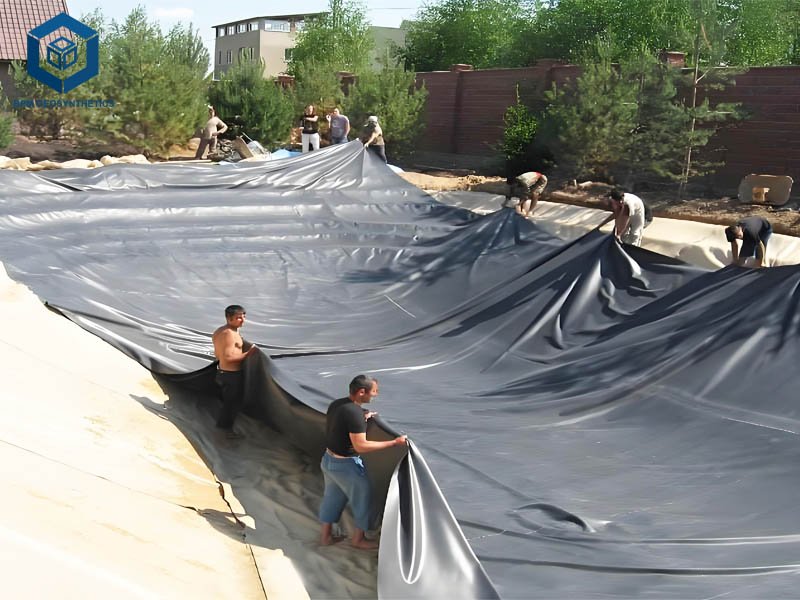
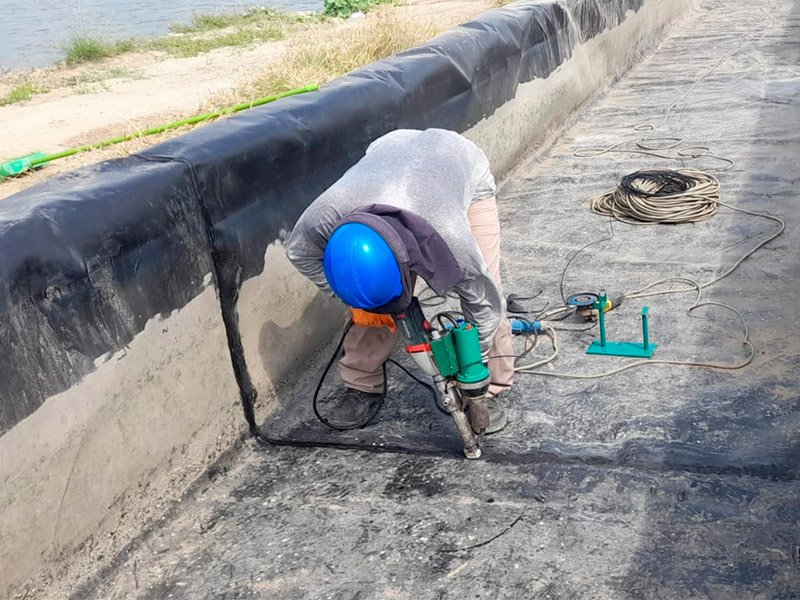
5. Tips to Optimize HDPE Geomembrane Cost
Choose the Right Thickness
Select thickness based on application: 0.5–1.0 mm for aquaculture, 1.5–2.0 mm for landfills, and 2.0–3.0 mm for mining. Over-specifying thickness increases costs by 20–30%.
Source from Reputable Suppliers
Chinese suppliers like BPM Geomembrane and Haoyang Environmental offer 30–60% lower prices than Western counterparts while meeting GRI-GM13 standards. Request samples to verify quality.
Plan Bulk Orders
Order 10,000+ m² to secure 20–30% discounts. Consolidate projects to maximize economies of scale.
Optimize Installation
Hire certified crews to reduce installation errors by 15%. Use geotextiles ($0.15–$0.50/m²) to enhance puncture resistance and extend lifespan by 20%.
Consider Lifetime Costs
Virgin HDPE liners cost more upfront but save 20–30% over 30 years due to lower maintenance and replacement needs. Avoid recycled resin for critical applications to prevent 10–15% higher failure rates.
6. Case Studies: Real-World Cost Examples
Fish Pond in the Philippines (2024)
- Project: 1,500 m² fish pond using 0.75 mm smooth HDPE liner.
- Cost: $1.50/m² for materials ($2,250), $0.80/m² for installation ($1,200), total $3,450.
- Supplier: Haoyang Environmental, virgin HDPE, 20-year lifespan.
- Outcome: 95% water retention, 15% cost savings vs. LLDPE.
Landfill in South Africa (2025)
- Project: 30,000 m² landfill using 2.0 mm textured HDPE liner.
- Cost: $2.50/m² for materials ($75,000), $1.50/m² for installation ($45,000), total $120,000.
- Supplier: Haoyang Environmental, GRI-GM13-certified, 50-year lifespan.
- Outcome: 99% seepage prevention, 20% lower lifetime costs vs. recycled resin.
Mining Heap Leach Pad in Congo (2024)
- Project: 15,000 m² heap leach pad using 2.0 mm textured HDPE liner.
- Cost: $3.00/m² for materials ($45,000), $2.00/m² for installation ($30,000), total $75,000.
- Supplier: BPM Geomembrane, virgin resin, 40-year lifespan.
- Outcome: 90% chemical resistance, 15% reduced environmental risks.
7. Conclusion
HDPE geomembrane costs in 2025 range from $0.50 to $20 per square meter, influenced by material quality, thickness, order volume, supplier location, installation, and market conditions. Virgin HDPE liners ($1.50–$3.50/m²) offer 40–50-year lifespans, making them ideal for landfills and mining, while 0.5–1.0 mm liners ($0.50–$1.50/m²) suit aquaculture and water management. Chinese supplier like BPM Geomembrane provides 30–60% cost savings compared to North American ($5–$20/m²) or European alternatives, with GRI-GM13 compliance ensuring quality.
To optimize costs, select the appropriate thickness, source from reputable suppliers, plan bulk orders, and prioritize virgin resin for critical applications. For precise quotes, contact suppliers like BPM Geosynthetics, providing project details (thickness, area, application). By leveraging these insights, you can achieve 15–20% cost savings and ensure 95% containment efficiency, enhancing project success.

